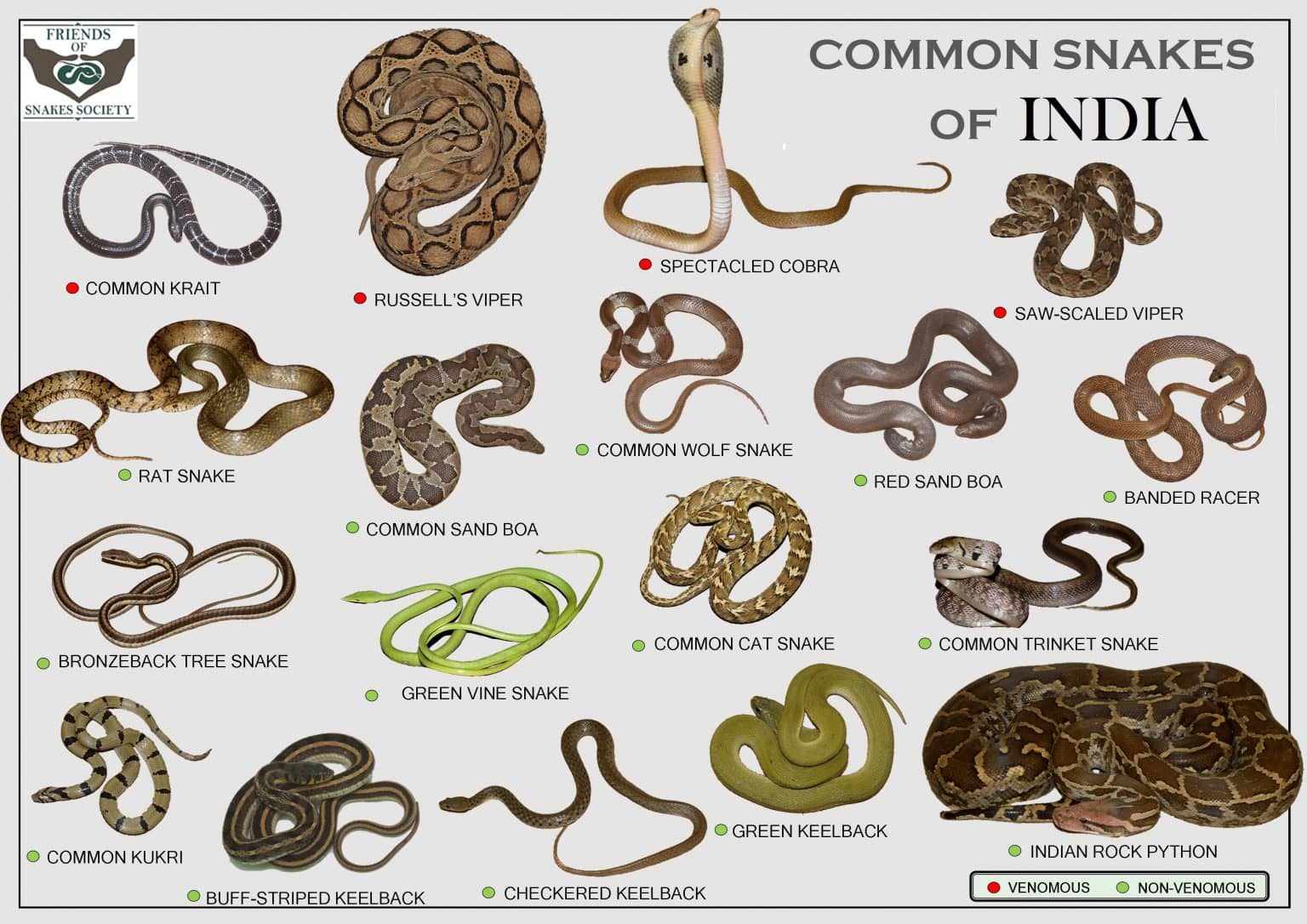Snakes are elongated, legless reptiles of the suborder Serpentes. They can be distinguished from legless lizards by their lack of eyelids and external ears. They inhabit every continent, except Antarctica. Snakes come in all sizes, with the smallest Barbados thread snakes growing up to 4 inches, and the longest extant species, the Reticulated Python, reaching up to 30 feet.

Snakes are ectothermic, amniote vertebrates covered in overlapping waterproof scales. In order to accommodate their narrow bodies, snakes’ paired organs (such as kidneys) appear one in front of the other instead of side by side, and most have only one functional lung. Some species retain a pelvic girdle with a pair of vestigial claws on either side of the cloaca.

Many species of snakes have skulls with many more joints than their lizard ancestors, enabling them to swallow prey much larger than their heads with their highly mobile jaw. Certain lineages have evolved a specialized arsenal, fangs & venom, to deter their threats and procure their prey.

Despite the absence of limbs, snakes inhabit all available habitats – terrestrial, aquatic, arboreal, and fossorial. Depending on the species & terrain, snakes employ several modes of locomotion to move around.

With over 3,880+ species (as of July 2021) across the globe, snakes play a crucial role in maintaining ecological balance & sustaining life on our planet.

